Newest Volume in the Joseph Smith Papers Series Documents a Time of Hope and Optimism
Contributed By Trent Toone, Deseret News

This 1845 painting, created after Joseph Smith’s death, depicts the prophet with the Nauvoo Legion. It is considered the earliest known visual depiction of the Nauvoo Legion. Photo courtesy of the Joseph Smith Papers.
At a Church conference in April 1840, Latter-day Saint Apostles Orson Hyde and John E. Page were called to a special mission.
Instead of going out to proselytize, the two Apostles were appointed to travel to “London, Amsterdam, Constantinople, and Jerusalem” to converse with “Elders of the Jews” and collect information about the gathering of the Jews. They were also assigned to publish their findings throughout the United States.
But things didn’t quite go as planned.
While soliciting funds and traveling east, the missionary companions became separated. Hyde, who had the necessary funds, moved on without Page, who didn’t have the funds. While Hyde eventually made it to Europe and Israel, Page never rejoined him. He remained in the eastern states doing missionary work until he was called back to Nauvoo, Illinois.
“I think sometimes we’ve told this story as, look at how unfaithful John E. Page is,” said Brett D. Dowdle, a Joseph Smith Papers editor. “But I think it’s a case where you have two men doing their best under the circumstances with a lack of modern technology, and communication is hard because of the distance. It ends up being a misunderstanding.”
This misconception is clarified in the newest volume of the The Joseph Smith Papers, Documents, Volume 8, February-November 1841. It also offers more details about Hyde’s remarkable mission, “One of the jewels of this volume,” Dowdle said.
Documents, Volume 8, is the 19th installment of the Joseph Smith Papers series, which launched in 2008. Documents, Volume 9, the 20th installment, is set for release at the end of September.
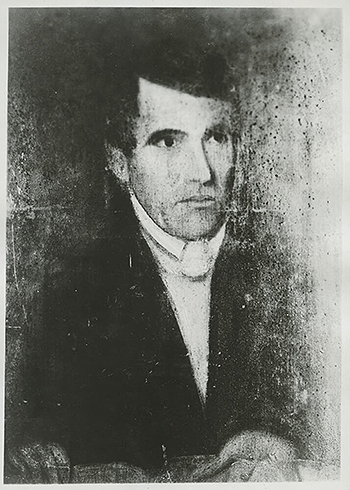
John E. Page, a member of the Quorum of the Twelve Apostles, was called to accompany fellow Apostle Orson Hyde on a mission to parts of Europe and Jerusalem, but he never left the United States. He did travel through Ohio, New York, and Philadelphia. Photo courtesy of the Joseph Smith Papers.
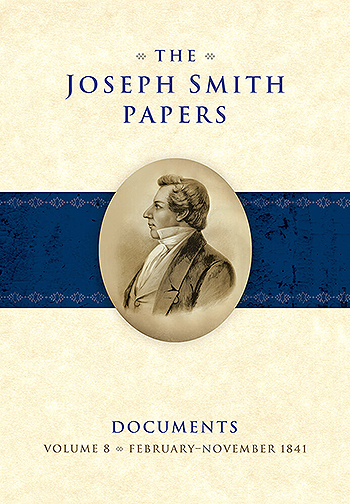
The latest volume of The Joseph Smith Papers: Documents, Volume 8 covers February to November 1841 of the Prophet Joseph Smith’s life in Nauvoo, Illinois. Photo courtesy of the Joseph Smith Papers.
The feeling in Documents, Volume 8, is one of optimism and renewed hope as Joseph Smith and members of The Church of Jesus Christ of Latter-day Saints work to set up a safe and protected gathering place in Nauvoo, Illinois, more than a year after fleeing the persecutions in Missouri, said Brent M. Rogers, one of the volume’s editors.
“The months covered in Documents, Volume 8 highlight great growth and development in the city of Nauvoo,” Rogers said. “From the increase in Church members gathering to the banks of the Mississippi and the beginning efforts to build the temple to the organization of city government, Joseph Smith’s experience in 1841 Nauvoo is fascinating. It is a time of relative calm, hope, and optimism. But the months covered in this volume are not without their difficulties. One can see an approachable and relatable Joseph Smith as he deals with debt repayment and the death of family members—life experiences that continue to resonate today.”
Among the 99 documents in the volume are personal correspondence, revelations, discourses, financial documents, and meeting minutes.
Rogers, Dowdle, Mason K. Allred, and Gerrit J. Dirkmaat edited Documents, Volume 8. Nicole Christensen Fernley served as lead production editor.
In addition to insights about Page’s mission, Rogers and Dowdle shared eight highlights from the new volume in a recent interview with the Deseret News.
Hyde’s homesickness
As Hyde traveled through the cities of Europe on his way to Jerusalem, he met with Jewish congregations whenever possible. He described his journey in a series of letters, Dowdle said.
“His letters are a fantastic, descriptive travel log of where he’s visiting and who he’s talking to,” Dowdle said. “You see Orson Hyde’s appreciation of his Americanism grow. Remember this is coming out of Missouri, where he had been through some struggles, but now he’s on these foreign lands, and he feels this sense of patriotism and American pride.”
In a letter dated July 17, 1841, Hyde expresses some homesickness that modern missionaries might be able to relate to, although it’s a little more eloquent than most 18-year-olds, Dowdle said.
“Though now far separated from you; and also from her, who with me, has suffered the chilling blasts of adversity, yet hope lingers in this bosom, brightened almost into certainty by the implicit confidence reposed in the virtue of that call which was borne on the gentle breeze of the spirit of God through the dark shades of midnight gloom, ’till it found a mansion in my anxious and enquiring heart, that my feet shall once more press the American soil; and under the shade of her streaming banner embrace again the friends I love,” Hyde wrote.
“You see someone who’s out on a mission on his own and is worried, am I ever going to get home again? Am I ever going to see my wife and family again?” Dowdle said. “Then he has this spiritual reassurance that it’s going to be okay. He will be able to return home. I love these letters because of his description of the places he visits but also the amount of heart and emotion that he puts into it that describes what it is to be a missionary, and in his case, a missionary without a companion in a foreign land.”
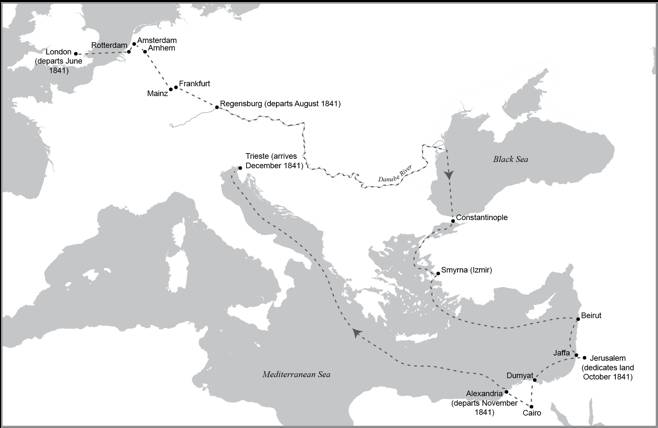
A map showing the missionary travels of Apostle Orson Hyde during the early 1840s. Photo courtesy of the Joseph Smith Papers.
Brigham’s revelation
One week after Brigham Young returned from a mission to England in July 1841, Joseph Smith received a revelation on his behalf that later became Doctrine and Covenants section 126.
The revelation tells the senior Apostle that he will never be asked to leave his family again.
“My servant Brigham, it is no more required at your hand to leave your family as in times past, for your offering is acceptable to me,” it reads. “I have seen your labor and toil in journeyings for my name. … Take especial care of your family from this time, henceforth and forever.”
This revelation is really about the faith and sacrifices of Brigham Young’s wife, Mary Ann Angell Young, Dowdle said.
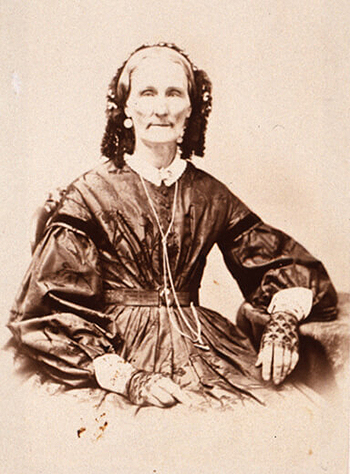
Vilate Murray Kimball is the wife of early Church Apostle and missionary Heber C. Kimball. Photo courtesy of the Joseph Smith Papers.
“That mission to England was the longest he had served, and during that time Mary Ann Young had really struggled with poverty and having enough to eat,” Dowdle said.
While her husband was in England, Mary Ann Young, then a mother of six, took a boat across the Mississippi River and asked for some potatoes from the tithing office. It was not mentioned to Brigham, Dowdle said.
“That was pretty common for these amazing women, as their husbands were out on missions, to just keep things going,” Dowdle said. “I think this revelation is a real acknowledgment of the difficulties these women endured so their husbands could spread the gospel and build the kingdom in England.”
Vilate Murray Kimball, wife of Apostle Heber C. Kimball, opened her home to a young woman convert recently arrived from England who had nowhere else to go, Rogers said.
“The faith and strength of women is seen, and it’s the bedrock of the Latter-day Saint experience in Nauvoo and moving forward,” Rogers said. “With these long missions being undertaken by members and Church leaders, it really is up to these sisters to take care of the household and find the means to support their own family. And they’re not just looking out for themselves, they are looking out for the good of the community and doing everything they can to help people as they gather at Nauvoo. The building up of the Church couldn’t happen without them, their work and sacrifice.”
Nauvoo City Council minutes
On February 3, 1841, the Nauvoo City Council meeting started at 6 p.m. with John C. Bennett being sworn into office as mayor by Justice of the Peace Dan H. Wells.
Joseph Smith followed with an opening prayer.
Mayor Bennett then “gave notice that Henry G. Sherwood had been appointed City Marshal and requested the public respect and obey him as such,” according to city council minutes.
The meeting proceeded with other appointments and business matters, including the organization of the Nauvoo Legion, urban planning and city development, and decisions on the vending of liquor, Rogers said.
“I think the city council minutes are very interesting,” Rogers said. “Among the first ordinances raised and passed by the city council is an ordinance to organize the Nauvoo Legion. There’s a bill to organize the University of the City of Nauvoo. They vote to tender a vote of thanks to the citizens of Quincy, Illinois, for their help during the trying time of the year before.”
An overall review of the city council’s work shows an effort by the Latter-day Saints to create a space where constitutional rights are guaranteed, Rogers said.
“This is all coming out of the Missouri experience where constitutional rights and pleas that Joseph is making as far up as the president of the United States prior to this were not being granted,” Rogers said. “So the city council in 1841 is setting laws in motion and passing them to make Nauvoo a place where constitutional rights are guaranteed.”

This document details a religious freedom ordinance passed by the Nauvoo City Council in 1841. Photo courtesy of the Joseph Smith Papers.
Religious freedom
About a month later, the Nauvoo City Council passed “An Ordinance in relation to religious Societies” granting all religious sects and denominations free toleration and equal privileges in Nauvoo. This legislation demonstrated a commitment to protecting the religious rights of all people as set forth in the United States constitution. Among the faiths listed on the document are Catholics, Presbyterians, Methodists, Baptists, Latter-day Saints, Quakers, Episcopalians, Universalists, Unitarians, and Mahommedans (Muslims), Rogers said.
“I think it’s instructive that they list all these out. Catholics at this time in American society are pretty maligned, Muslims as well. That they are named specifically amongst these other Protestant Christian groups is pretty telling,” Rogers said. “The city council and Joseph Smith are trying to make a pretty clear point that we are going to permit and have freedom of religion in this place. That isn’t always the case in their experience and for others in various places in the United States even though we often think of freedom of religion as a foundational element of American society, right? But it was not in practice.”
Some detractors might say there are only Latter-day Saints in Nauvoo, which was true, but this ordinance was intended for all faiths, Rogers said.
“I think Joseph Smith at this time really means this, and he really wants to see religious freedom as something that people generally get to experience because it’s something that had been denied him and denied his fellow religionists,” Rogers said.
The U. of Nauvoo
Another evidence of Joseph Smith’s innovative thinking during this period is the University of the City of Nauvoo.
One of the university’s purposes was to oversee and ensure equal education throughout the area, Dowdle said.
“Joseph is thinking in terms of administrative matters for schools and other things in a way that most Americans aren’t thinking,” Dowdle said. “Most schools in this period are set up and teach what they teach. So this is kind of a profound social idea that Joseph has in this period.”
John Laws’s letter
One of the more interesting documents in the collection is a letter to Joseph Smith from a Philadelphia lawyer and politician named John Laws.
Laws wasn’t a member of the Church but had family members who were Latter-day Saints. Laws began to notice a series of newspaper articles that were critical of the Church and knew enough to know they weren’t entirely truthful in their claims. Without urging from anyone, Laws responded by writing three articles in defense of the Saints and arguing against the accusations.
On October 18, 1841, Laws wrote to Joseph Smith asking for more information so he could continue to defend their rights, Dowdle said.
“His principal interest was basically, what’s happening here is not right,” Dowdle said. “He wanted to defend their religious freedom regardless of whether he agreed with them or not. I think that’s a really neat letter.”
Visit josephsmithpapers.org to learn more about Documents, Volume 8 and the rest of the project.
Interesting quotes
Documents, Volume 8 is full of interesting statements from early Church leaders and others.
Excerpt from a letter from John Taylor, dated February 3, 1841:
“I thank God my Heavenly Father, that ever I heard the sound of this gospel, and received a part in this priesthood. I received it with greater joy than earthly treasures, than the effervescent praise of man, or all the empty bubbles of earthly honor. And I pray that I may be kept humble, and that I may be able to realize continually the importance of my calling and finish my work with joy.”
Report of the First Presidency to the Church circa April 7, 1841:
“From what we now witness, we are led to look forward with pleasing anticipation to the future, and soon expect to see the thousands of Israel flocking to this region, in obedience to the heavenly command; numerous habitations of the saints thickly studding the flowery and wide spread prairies of Illinois; temples for the worship of our God erecting in various parts; and great peace resting upon Israel. We would call the attention of the saints more particularly to the erection of the Temple, for on its speedy erection great blessings depend.”
On May 26, 1841, Joseph Smith wrote to editor Thomas Sharp addressing negative reports about him and the Saints in the newspaper. He canceled his subscription.
“Mr. (Thomas) Sharp, Editor of the Warsaw Signal: Sir—You will discontinue my paper—its contents are calculated to pollute me, and to patronize the filthy sheet—that tissue of lies—that sink of iniquity—is disgraceful to any moral man. Yours, with utter contempt, JOSEPH SMITH.
“P. S. Please publish the above in your contemptible paper.”
Delegation and “Flyover period”
This volume also starts to show Joseph Smith delegating and placing more trust in members of the Quorum of the Twelve to lead the Church as they return from their missions to England.
“This is a really, really significant moment in the history of the Church,” Dowdle said. “That’s essential to the Church we see today.”
The events of 1841 are not as exciting as other eras in Church history, but Rogers hopes readers will find a new appreciation for it in Documents, Volume 8.
“It’s kind of a flyover period—1841 gets glossed over because there isn’t anything super spectacular. It’s more of the everyday,” Rogers said. “But there’s a lot going on. It’s one of those seasons in the life of Joseph Smith and the Saints where they’re struggling to find ways to pay the bills. But it’s also an everyday life that brings a lot of hope and optimism. … Seeing his dedication to the things that the Lord wants him to do is very inspiring to me.”

Isaac Galland was baptized by Joseph Smith in 1839. In 1841, he was asked to assist Hyrum Smith in property transactions for the Church. Photo courtesy of the Joseph Smith Papers.

In 1841, Illinois Gov. Thomas Carlin commissioned Joseph Smith as a lieutenant general of the Nauvoo Legion. Photo courtesy of the Joseph Smith Papers.

Members of The Church of Jesus Christ of Latter-day Saints mourned the 1841 death of President William Henry Harrison, ninth president of the United States. Photo courtesy of the Joseph Smith Papers.

John M. Bernhisel, a physician from New York City, joined the Church in 1840 and helped the Church locate and purchase property in Nauvoo. Photo courtesy of the Joseph Smith Papers.
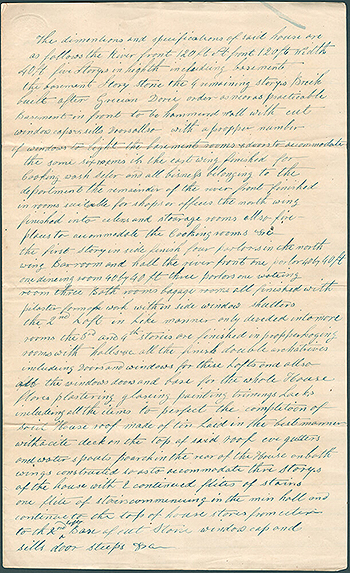
This document includes construction specifications for the Nauvoo House. Photo courtesy of the Joseph Smith Papers.
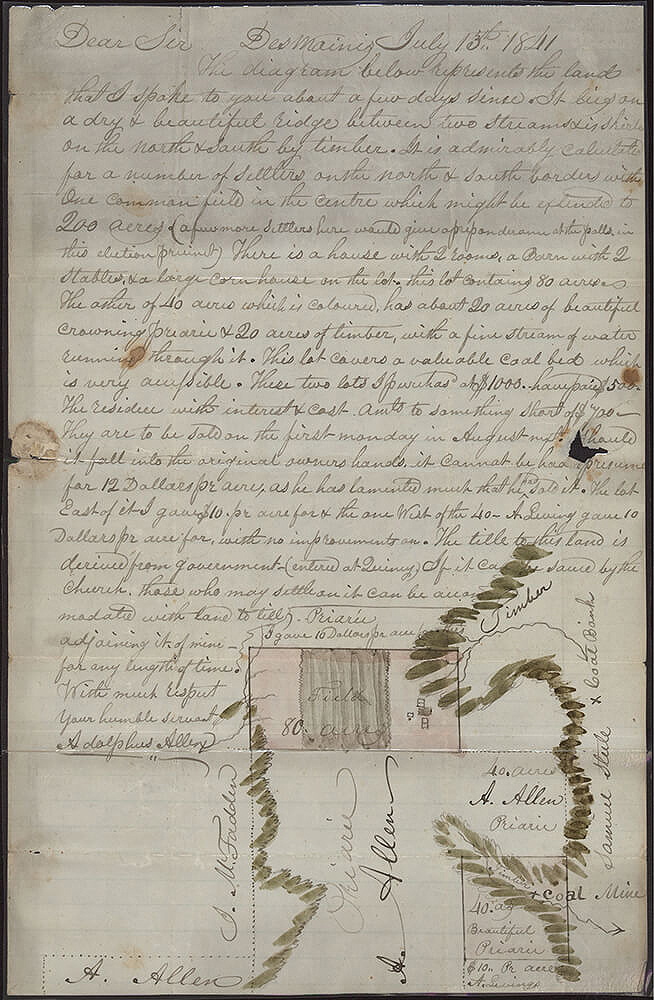
This letter from Adolphus Allen, dated July 13, 1841, offers to sell land in the area to Joseph Smith. Photo courtesy of the Joseph Smith Papers.

This document depicts minutes from a special conference held in August 1841. During the conference, the Nauvoo Saints were informed of the new administrative responsibilities of the Quorum of the Twelve Apostles. Photo courtesy of the Joseph Smith Papers.
